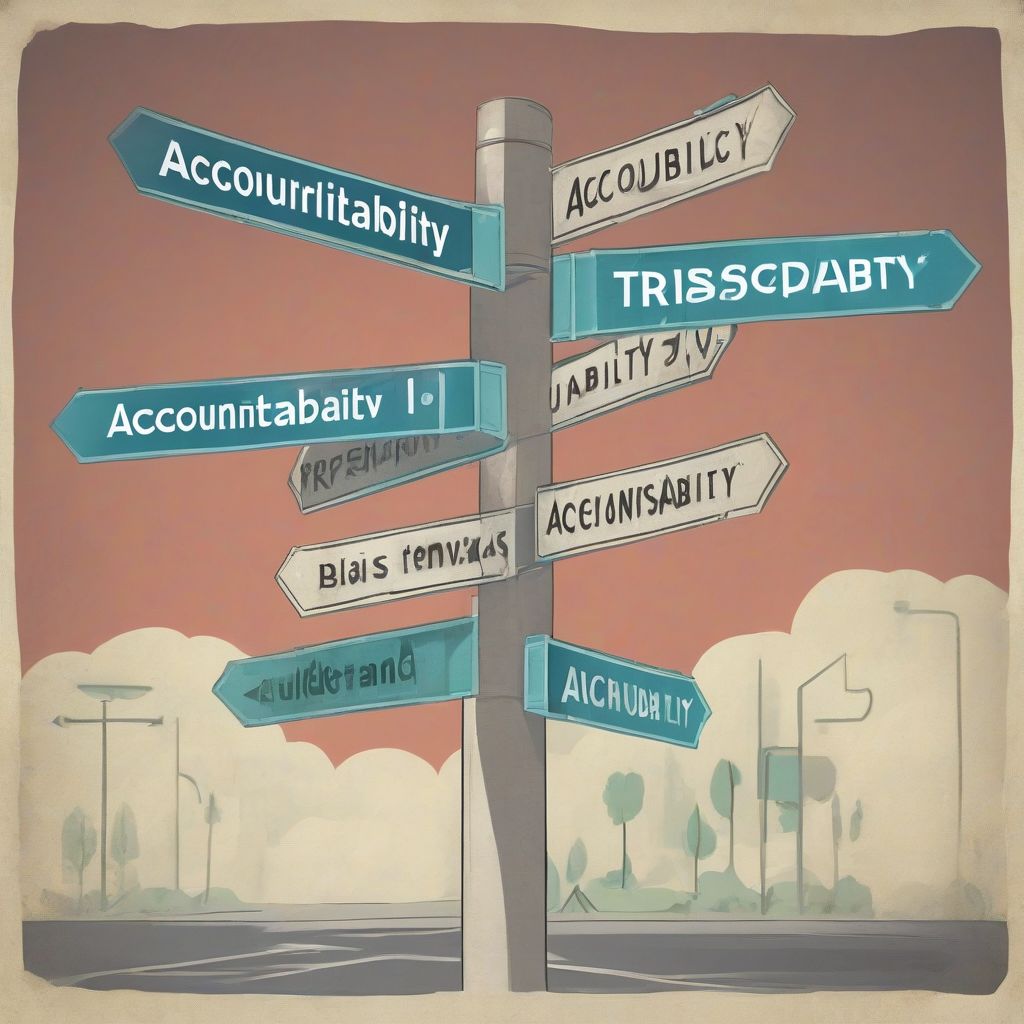Imagine a world where your doctor consults with an AI-powered diagnostician before making a treatment recommendation. Or where self-driving cars navigate our streets, making split-second decisions that impact lives. This isn’t science fiction; it’s the rapidly approaching reality fueled by the evolution of artificial intelligence. But as we integrate AI into the fabric of our lives, we find ourselves grappling with complex questions about the ethical implications and legal frameworks governing its use. The intersection of AI, ethics, and the law presents uncharted territory, demanding careful navigation to ensure a future where innovation and human values coexist.
The Ethical Quandaries of AI: A Brave New World of Challenges
AI, in its various forms, has the potential to revolutionize industries, from healthcare and finance to transportation and entertainment. Yet, this potential comes bundled with ethical challenges that demand our attention:
1. Bias and Discrimination: The Algorithm’s Blind Spot
AI systems are often trained on massive datasets reflecting existing societal biases. This can lead to biased outcomes, perpetuating and even amplifying discrimination in areas like loan applications, job recruitment, and even criminal justice. Imagine an AI-powered hiring tool trained on data skewed towards male candidates in leadership roles; it might inadvertently penalize female applicants, hindering diversity and inclusion efforts.
2. Privacy Concerns: Navigating the Data Deluge
AI thrives on data, often collecting and analyzing vast amounts of personal information. This raises concerns about privacy violations and data security. For instance, facial recognition technology, while useful in security applications, could be misused for mass surveillance, eroding individual liberties and freedoms.
3. Accountability and Transparency: Unmasking the Black Box
Many AI systems operate as “black boxes,” their decision-making processes opaque and difficult to understand. This lack of transparency poses challenges for accountability. If an AI-powered medical device malfunctions, determining responsibility becomes complex, potentially hindering redress for patients who suffer harm.
 AI Ethics Crossroads
AI Ethics Crossroads
The Law’s Evolving Role: Crafting Rules for a New Age
As AI becomes increasingly sophisticated, legal frameworks are struggling to keep pace, grappling with how to regulate this transformative technology:
1. Liability and Responsibility: Who’s Accountable When AI Errs?
Determining liability when AI systems cause harm is a legal minefield. If a self-driving car causes an accident, who is responsible—the manufacturer, the software developer, or the user? Establishing clear legal frameworks for AI-related liability is crucial for ensuring justice and accountability.
2. Intellectual Property Rights: The AI Authorship Debate
The question of intellectual property (IP) in AI creations is complex. Can AI be considered an inventor or creator in the legal sense? If an AI system generates a patentable invention or copyrightable work, who owns the IP rights? These are questions with significant implications for innovation and creativity in the age of AI.
3. Regulation vs. Innovation: Striking the Right Balance
Governments worldwide are grappling with the challenge of regulating AI without stifling innovation. Overly restrictive regulations could hinder progress, while a hands-off approach might expose society to unforeseen risks. Finding the right balance is crucial for fostering responsible AI development.
A Collaborative Approach: Shaping an Ethical and Responsible AI Future
Navigating the complex intersection of AI, ethics, and law requires a collaborative approach involving stakeholders from various disciplines:
- Technologists: Those developing AI systems have a responsibility to prioritize ethical considerations and build safeguards against bias, discrimination, and privacy violations.
- Policymakers: Governments and regulatory bodies must create clear legal frameworks that address liability, IP rights, and data protection in the context of AI.
- Ethicists and Social Scientists: Their expertise is crucial in identifying potential ethical pitfalls, shaping guidelines for responsible AI use, and fostering public discourse on the societal impact of this technology.
- The Public: Engaging in informed conversations about the potential benefits and risks of AI empowers individuals to demand ethical development and deployment of this transformative technology.
Charting Our Course: A Shared Responsibility
The intersection of AI, ethics, and the law is not a destination but a journey, a continuous process of adaptation and evolution. As we venture further into the age of AI, we must remain vigilant, ensuring that this powerful technology serves humanity’s best interests. By embracing ethical principles, fostering robust legal frameworks, and engaging in open dialogue, we can collectively shape an AI future where innovation flourishes alongside our deeply held values. Let’s choose to navigate this uncharted territory with wisdom, foresight, and a commitment to a future where technology empowers, rather than endangers, our shared humanity.
What are your thoughts on the ethical and legal challenges posed by AI? Share your perspectives in the comments below!
[amazon bestseller=”AI Ethics”]
